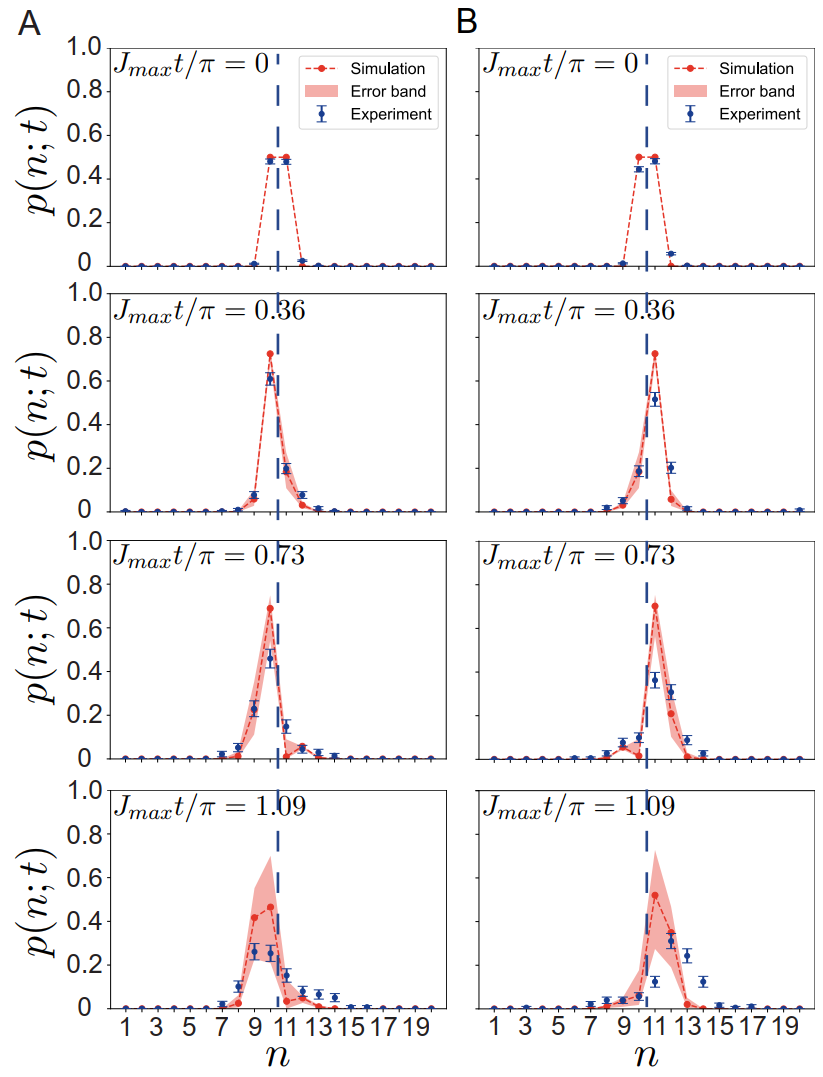The research group led by Professor Luming Duan at the Institute for Interdisciplinary Information Sciences, Tsinghua University, made significant progress in the field of ion trap quantum simulation, observing for the first time the quantum superposition of topological defects in the experiment. The paper titled "Observation of quantum superposition of topological defects in a trapped ion quantum simulator" was recently published in Science Advances.
Topological defects, as a fundamental mathematical concept, have wide applications in many fields in physics such as magnetism, high-temperature superconductivity, grand unified theory, and cosmology. Previous experimental studies typically focused only on classical properties of topological defects, such as their density. Although theoretical works had predicted quantum superposition of topological defects and applied them to understand the dynamics of quantum phase transitions, experimental observation of this phenomenon was challenging due to the decoherence of the entire quantum system and errors in quantum state preparation and measurement.

Figure 1: Schematic diagram showing the evolution of a spin kink over time, producing the quantum superposition at different sites.
In this work, researchers prepared an initial single-spin-kink state on a one-dimensional chain of 20 ions through individual addressing of each ion qubit. Researchers then used a transverse-field Ising model with long-range interactions to realize a smooth effective potential field for the spin kink, observing the spin kink splitting into a superposition state at different locations during the dynamic evolution due to the quantum interference.
To explicitly verify the quantum coherence of the superposed defects, researchers further used 21 ions to prepare a quantum superposition of spin kinks at adjacent sites. By controlling the relative phase of this superposition state, the researchers observed the spin kink selectively propagating in different directions, thus ruling out a description based on classical probabilistic propagation and verifying the quantum coherence of the superposition state.

Figure 2: Experimental observation of the dependence of spin kink propagation direction on the initial superposition state phase.
The co-first authors of this paper are IIIS PhD student Zhijie Cheng and IIIS Assistant Professor Yukai Wu. The corresponding author is IIIS Professor Luming Duan. Other co-authors include IIIS PhD student Shijiao Li, HYQ Co. members Quanxin Mei and Bowen Li, IIIS PhD student Gangxi Wang, IIIS postdoc Yue Jiang, IIIS Assistant Research Fellow Binxiang Qi, IIIS Associate Research Fellow Zichao Zhou, and IIIS Assistant Professor Panyu Hou.
This work was supported by Innovation Program for Quantum Science and Technology (2021ZD0301601), Tsinghua University Initiative Scientific Research Program, the Ministry of Education of China, the New Cornerstone Investigator Program, Tsinghua University Dushi program, and the start-up fund from Tsinghua University.
Paper link: https://www.science.org/doi/10.1126/sciadv.adr9527
Editors: Li Han, Jiang Yueliang

